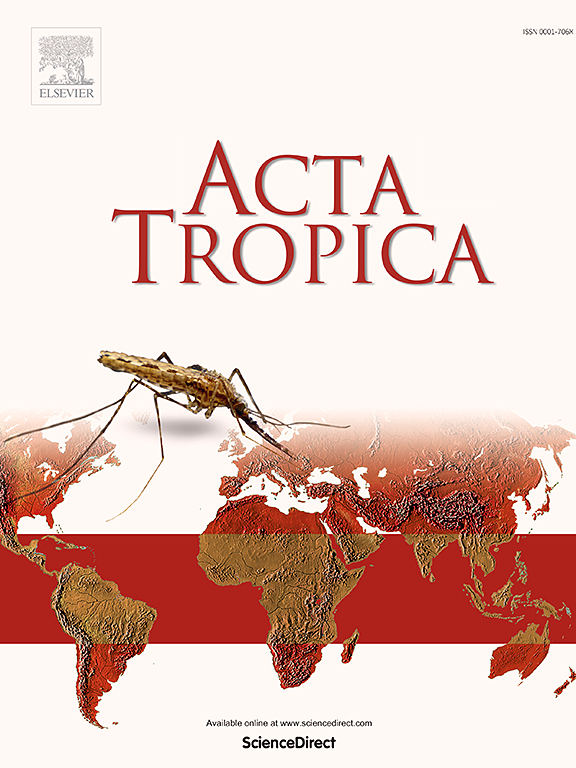Exploring the presence of Leishmania RNA Virus 1 in Leishmania (Viannia) braziliensis isolates from the most endemic area of American tegumentary Leishmaniasis in Argentina
IF 2.1
3区 医学
Q2 PARASITOLOGY
引用次数: 0
Abstract
American Tegumentary Leishmaniasis (ATL) comprises a group of diseases caused by protozoan parasites of the Leishmania genus. The endosymbiont Leishmania RNA Virus 1 (LRV1) has been associated with severe disease forms and treatment failure in several South American countries; however, no data are available for Argentina. This study conducted the first screening for LRV1 in the country's most endemic region, Salta Province, analyzing 44 clinical samples from cutaneous, mucosal, and relapsing ATL cases. All samples were identified as Leishmania (Viannia) braziliensis by PCR-RFLP, and tested negative for LRV1 using RT-PCR. Applying a zero-patient design to avoid concluding absolute absence, the theoretical LRV1 prevalence was estimated to be below 7 %, substantially lower than the 25–77 % range reported in Amazonian regions. These findings suggest that LRV1 distribution may not extend into Argentina. While LRV1 may contribute to disease severity when present, it should not be regarded as an exclusive or definitive factor in clinical presentation or therapeutic response in the region. Further research into genetic, immunological, and epidemiological factors is needed to better understand severe ATL forms in Argentina and to develop targeted strategies for improved disease management.

探索从阿根廷美洲利什曼病最流行地区分离的巴西利什曼病(Viannia)分离株中利什曼病 RNA 病毒 1 的存在。
美洲土著利什曼病(ATL)包括一组由利什曼属原生动物寄生虫引起的疾病。内共生体利什曼RNA病毒1 (LRV1)与一些南美国家的严重疾病形式和治疗失败有关;然而,没有关于阿根廷的数据。该研究在该国流行最严重的地区萨尔塔省进行了首次LRV1筛查,分析了44份来自皮肤、粘膜和复发ATL病例的临床样本。所有样本经PCR-RFLP鉴定为巴西利什曼原虫,RT-PCR检测为LRV1阴性。采用零患者设计以避免得出绝对不存在的结论,LRV1的理论患病率估计低于7%,大大低于亚马逊地区报告的25-77%的范围。这些发现表明LRV1的分布可能不会延伸到阿根廷。虽然LRV1在存在时可能导致疾病严重程度,但不应将其视为该地区临床表现或治疗反应的排他性或决定性因素。需要进一步研究遗传、免疫学和流行病学因素,以便更好地了解阿根廷的严重ATL形式,并制定有针对性的战略,改进疾病管理。
本文章由计算机程序翻译,如有差异,请以英文原文为准。
求助全文
约1分钟内获得全文
求助全文
来源期刊

Acta tropica
医学-寄生虫学
CiteScore
5.40
自引率
11.10%
发文量
383
审稿时长
37 days
期刊介绍:
Acta Tropica, is an international journal on infectious diseases that covers public health sciences and biomedical research with particular emphasis on topics relevant to human and animal health in the tropics and the subtropics.
 求助内容:
求助内容: 应助结果提醒方式:
应助结果提醒方式:


